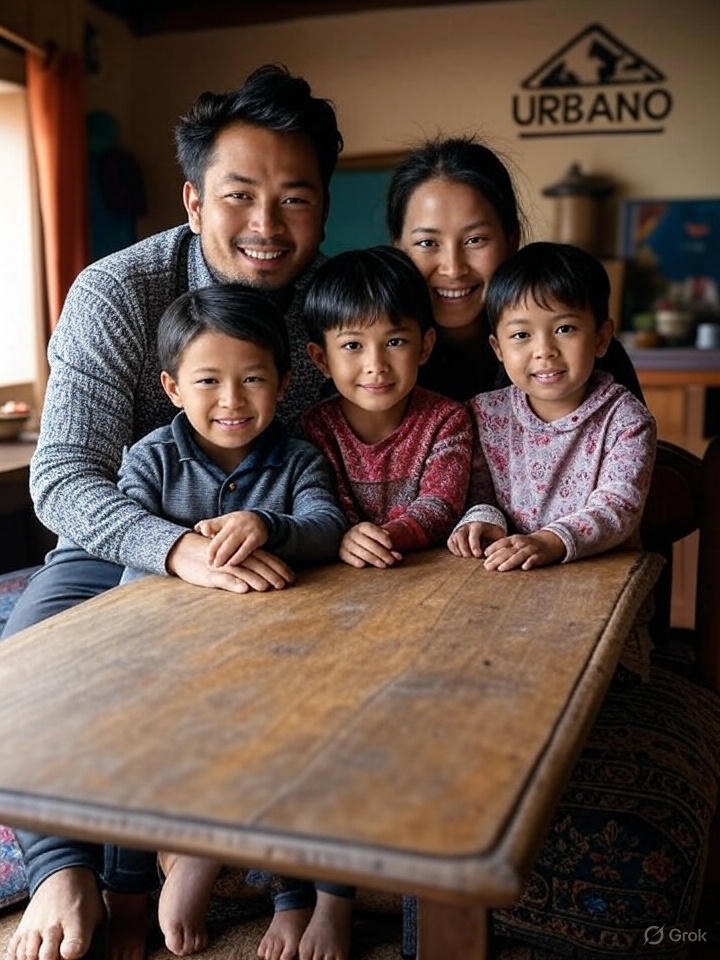Home and House - What is the Difference?

In the heart of Nepal, where the majestic Himalayas stand tall and vibrant culture thrives, the concepts of "house" and "home" hold profound significance. While these terms are often used interchangeably, they encapsulate distinct meanings that resonate deeply within the Nepalese context. Understanding the difference between a house and a home is not merely a matter of semantics; it is a journey into the soul of what makes a space truly special.
What is a House? A house is a physical structure, a tangible entity built with bricks, mortar, and wood. It serves as a shelter, providing protection from the elements, a place to rest, and a space to store belongings. In Nepal, houses vary widely—from traditional mud-brick homes in rural villages to modern apartments in bustling cities like Kathmandu. The architecture may differ, but the fundamental purpose remains the same: to offer a safe and functional living space.
A house is a physical structure, a tangible entity built with bricks, mortar, and wood. It serves as a shelter, providing protection from the elements, a place to rest, and a space to store belongings. In Nepal, houses vary widely—from traditional mud-brick homes in rural villages to modern apartments in bustling cities like Kathmandu. The architecture may differ, but the fundamental purpose remains the same: to offer a safe and functional living space.
What is a Home? A home transcends the physical. It is an emotional sanctuary where memories are woven into the fabric of the walls. A home is where laughter echoes, traditions are upheld, and the warmth of family and community envelops you. In Nepal, a home is often the epicenter of cultural practices and familial bonds. It’s where festivals like Dashain and Tihar are celebrated with fervor, where the aroma of momos and sel roti fills the air, and where generations come together under one roof.
A home transcends the physical. It is an emotional sanctuary where memories are woven into the fabric of the walls. A home is where laughter echoes, traditions are upheld, and the warmth of family and community envelops you. In Nepal, a home is often the epicenter of cultural practices and familial bonds. It’s where festivals like Dashain and Tihar are celebrated with fervor, where the aroma of momos and sel roti fills the air, and where generations come together under one roof.
The Cultural Heartbeat of a Nepalese Home
In Nepal, the distinction between a house and a home is deeply rooted in cultural and societal values. The joint family system, where multiple generations live together, reflects the importance of familial ties. A home in this context is not just a building; it is a living, breathing entity that nurtures relationships and preserves heritage.
During festivals, the transformation of a house into a home becomes palpable. The meticulous cleaning, vibrant decorations, and communal cooking sessions turn the physical space into a haven of joy and togetherness. It is in these moments that the true essence of a home shines—a place where love and tradition intertwine.
Challenges in Creating a Home
While the idea of a home is idyllic, the reality in Nepal can be challenging. Urbanization and economic pressures have led to smaller living spaces, making it harder to maintain the joint family structure. The rising cost of real estate, especially in cities, adds another layer of complexity. Yet, despite these obstacles, Nepalese families find ways to infuse their spaces with the essence of a home—through shared meals, communal prayers, or simply spending time together.
Turning a House into a Home
Creating a home is an art that requires intention and heart. Here are a few ways to transform a house into a cherished home:
Personal Touches: Decorate with items that hold sentimental value, like family heirlooms or handmade crafts.
Cultural Elements: Incorporate traditional Nepalese decor, such as dhaka fabric or thangka paintings, to honor your heritage.
Community Connection: Foster relationships with neighbors and participate in local events to build a sense of belonging.
Shared Spaces: Design areas where family members can gather, whether for meals, conversations, or celebrations.
Conclusion
In Nepal, a house is a structure, but a home is a feeling. It is where the heart finds solace, culture is celebrated, and memories are made. As Nepal navigates the waves of modernization, the essence of a home remains a steadfast anchor. By embracing the values of family, tradition, and community, any house can become a home—a place where the soul finds its true dwelling.
